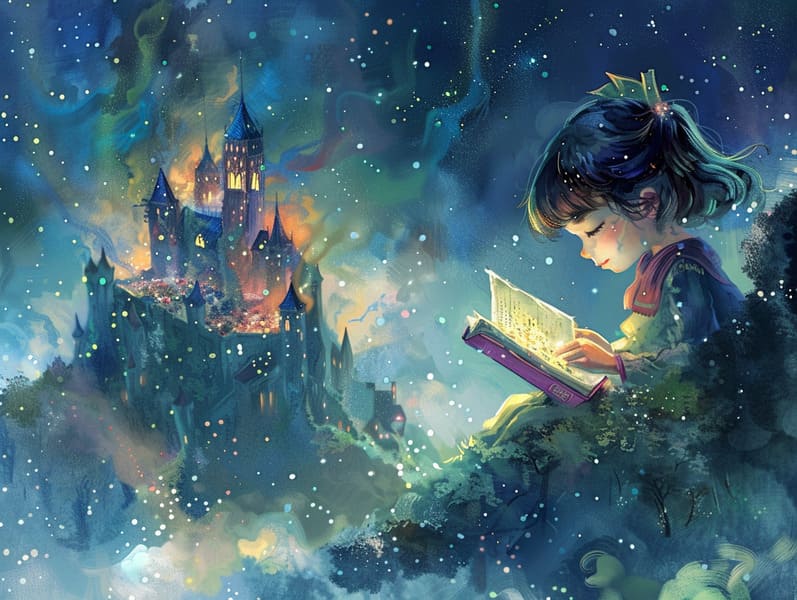A Brief History of Fairy Tales to Read and Its Perpetual Grace.
A Brief History of Fairy Tales to Read and Its Perpetual Grace.
Blog Article

Ancient fairy tales have timeless appeal. These tales have been transmitted from one generation to the next ages before they were ever written down. They originated from a variety of backgrounds, including Middle Eastern traditions. They were initially conveyed among older generations, often carrying themes and messages pertaining to the societal norms and beliefs of the time.
The renowned Brothers Grimm, Jacob and Wilhelm (the Grimm brothers), were among the first to gather and publish many of these beloved narratives. Their collection, "Grimm's Fairy Tales," included stories like "The True Bride," "Little Brother and Little Sister," and "Snow White," which have since become cornerstones in the world of traditional fairy tales. Similarly, Andersen's fanciful tales, such as "The Sea Maid," and "The Story of the Ugly Duckling," have won hearts worldwide, ensuring their place in the pantheon of beloved fairy tales.
Despite being ancient, these stories remain as applicable as ever, especially as bedtime stories for kids. These charming stories are now available in numerous formats, including richly illustrated books, whimsical animations, and digital storybooks.
Their persistent charm can be credited to several whimsical characteristics:
Moral Lessons: Classic fairy tales often offer important moral lessons. Fairy tales like "The Boy Who Cried Wolf" teach the significance of truthfulness, while "The Race of the Tortoise and the Hare" underline the traits of persistence and unpretentiousness. These stories offer little ones clear distinctions between moral and immoral, building their moral compass in a mild yet significant way.
Sympathy and Perception: Ancient fairy tales frequently illustrate characters facing challenges and struggles, stimulating children to feel with their struggles and back their triumphs. For instance, "Beauty and the Beast" teaches us the virtue of looking beyond appearances to perceive the true essence of a soul, strengthening perception and understanding.
Cultural Insights: Many old fairy tales are rich in the cultural contexts from which they arose. Exploring these narratives can provide intriguing perspectives into different cultures, enhancing a sense of world awareness and understanding.
Inventiveness and Fantasy: The fantasy-filled elements in traditional fairy tales—enchanted forests—enhance children’s dreaming abilities. These stories bring readers to mythical realms, fostering innovative ideas and a sense of delight that endures a lifetime.
Traditional fairy tales are not only charming but also instructive. They function as fantastical tools in building various cognitive and affective skills in young readers. When traditional fairy tales are read aloud, they advance language proficiency by bringing new language items and sophisticated sentence structures. This practice also boosts listening abilities and mindfulness, as kids stay focused, eager to see what happens next.
Furthermore, debating the themes and characters of traditional fairy tales can improve analytical skills and thought processes. The young are taught to detect patterns, guess what will happen, and grasp cause and effect. These discussions also further little ones reveal their thoughts and feelings, enhancing their emotional intelligence.
In today’s digital age, the existence of free fairy tales online has made these stories more obtainable than ever. Internet sites and apps give comprehensive collections of timeless fairy tales that can be browsed or heard anytime, anywhere. Fairy tales read out loud are particularly well-liked, supplying an immersive method for kids to immerse in these alluring stories. Voice books and read-out-loud stories guide characters and settings to life, often augmented by fantastical soundtracks and tunes that amplify the tale experience.
The timeless charm of classic fairy tales lies in their ability to change to today's world while maintaining their fundamental ideas. Contemporary retellings of these fairy tales often integrate more varied protagonists and modern settings, making them accessible to today’s audience. However, the main ideas of daring, warmth, and justness remain unchanged, continuing to reach children of all ages.
Old fairy tales also offer a sense of calm and knownness. They deliver up a well-ordered narrative with a apparent beginning, middle, and end, often concluding with the finalization of conflicts and the triumph of honesty over deceit. This reliability can be consoling for children, affording a sense of reliability in an shifting world.
Old fairy tales continue to fascinate and edify new generations, maintaining their appeal and applicability in modern society. As nighttime stories for kids, they extend a perfect blend of fascination and comprehension, cultivating moral values, empathy, and creativity. The existence of online storybooks and the well-received status of fairy tales read out loud secure that these ancient tales remain reachable to new generations.
By preserving and making known these narratives, we continue to extol the rich tapestry of fables and cultural heritage. Whether you are reading a colorful picture book, experiencing a electronic library, or listening via an audiobook, the appeal of ancient fairy tales is always within reach. These narratives highlight of the persistent influence of storytelling and its ability to unite us across generations and cultures.
Even if you are seeing a vividly illustrated book, delving into a digital library, or listening via an audio story, the fascination of traditional fairy tales is always within reach.
These fairy tales reveal of the steadfast strength get more info of storytelling and its ability to connect us across time and space, making a tie that fascinates and enlightens alike.